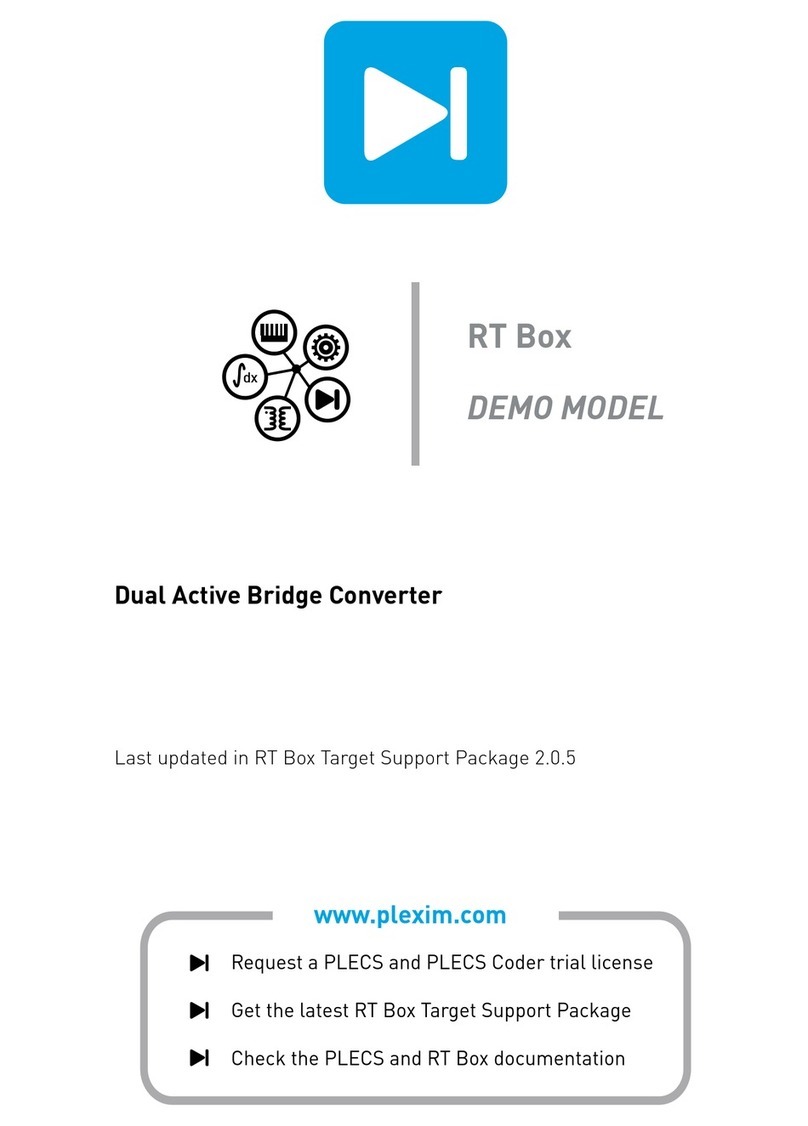
SPI interface loop-back demo on a single RT Box
1 Overview
The Serial Peripheral Interface (SPI) is a synchronous serial communication interface specification
used for short-distance communication, primarily with peripheral devices. SPI devices communicate
in full duplex mode using a master-slave architecture between a single master and multiple slaves.
The SPI Master block from the RT Box Target Support Library implements SPI communication via
digital outputs/inputs. There are 2 SPI modules available on the RT Box. Each SPI module can output
data on up to 4 paralleled data channels (using a common clock and chip select signal).
This demo model shows:
• a simple loop-back scenario that wires the SPI module digital output channel with the digital input
channel,
• how to configure the parameters inside the SPI Master block,
• SPI transmission within a single or multiple RT Box model steps.
One additional model shows the use case of the RT Box as SPI Master connected to an external ADC
device as the SPI slave. This additional model is explained in Appendix, and can be accessed by open-
ing the demo model folder.
1.1 Requirements
• One PLECS RT Box and one PLECS Coder license.
• The RT Box Target Support Package (minimum version 2.1.1).
• Follow the step-by-step instructions on configuring PLECS and the RT Box in the Quick Start guide
of the RT Box User Manual.
• One wire to connect the digital output channel 2 and digital input channel 2 on the front panel of
the RT Box.
2 Model
This demo model uses the SPI Master data output and data input on the same SPI module inside the
same subsystem. With the wiring between the SPI Master data output and input channel, a loop-back
of the SPI data is formed.
The circuit schematic is shown in Fig. 1. A Sine wave and a Pulse wave are packed into two 16-bit
words and transmitted out from the SPI Master data output channel. Through the loop-back wire, it
is received at the SPI Master data input channel, and then displayed in the Scope in Fig. 1 for com-
parison.
Figure 1: Subsystem circuit schematic for SPI loop-back demo
Additionally, a PWM Out block generates a PWM signal with 0.5 duty cycle synchronized with the RT
Box model step size by configuring its Synchronization with model step option as Enabled. This
PWM signal can be used as a reference to observe the different behaviors of SPI transmission within a
single or multiple RT Box model steps.
Fig. 2 shows the mask content of the SPI Master block. For the fields not mentioned in the following
explanation, please refer to the Help page of the SPI Master block.
www.plexim.com 1


































